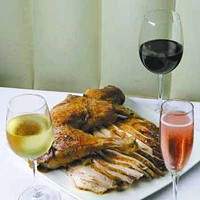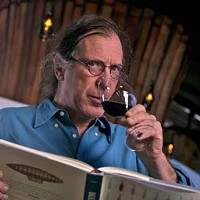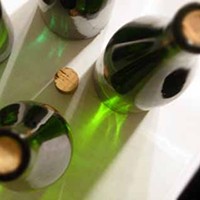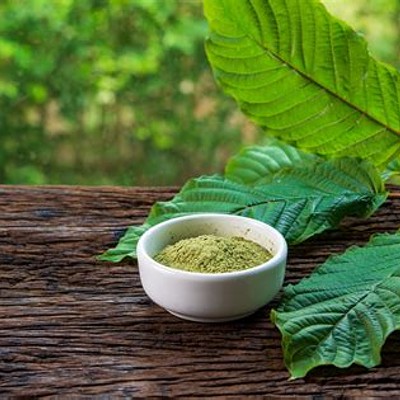In wine geek lingo, the sweet spot concept is called "terroir" [tair WAHR]. Originating from French, the word terroir encompasses all the natural factors involved in grape growing -- sun, rain, altitude and soil characteristics -- and essentially defines the unique soul of each grape. Terroir is why the French divided up their land long ago into quality-designated plots, since they realized fruit from one vineyard can be completely different from that of another 50 yards away. They call these plots "appellations," and when the appellation ends up on a label, only grapes from that specific location can be used in the wine. A French Burgundy example is "Chambolle Musigny "Les Amoureuses.'" To legally label this wine, winemakers are only allowed to source grapes from a small appellation named "Les Amoureuses" located in the district of Chambolle Musigny.
The reasoning behind this mind-blowingly complicated idea is that it provides an assurance of quality and consistency, since the more you know about the grapes inside the bottle, the better informed decision you can make about your wine purchase. It kinda makes sense, in a pain in the ass sort of way.
New world wines have only recently begun learning the terroir in their land, and have begun defining their appellations. When you see a label that reads "Napa Valley," "Yarra Valley" or "Maule Valley" you've stumbled upon an appellation. While Burgundy lists the appellation as the name of the wine, we generally name ours by the grape variety but also include the appellation. This system provides more information so you can follow your taste. For instance, central California's Paso Robles is a hot place. In the heat, grapes tend to ripen quickly, making them plump with sugar and big flavor. Although there are certainly exceptions, Paso Robles wines tend to be higher in alcohol, very ripe tasting and full bodied.
But then there are pretty useless appellations, like "California." The grapes could come from pretty much any area in the state, but this doesn't mean the wine is of lesser quality. We have more liberal laws about blending and labeling different wines than old world countries, so the winemaker could simply want to blend the grapes from two, three or ten different areas to create a unique flavor profile. Laws just don't let him/her label the wine more specifically than "California."
In the following weeks, I'll be exploring the different general appellations the new world has to offer. Although we're not even close to defining all our vast areas, we're getting close. Stay tuned.
Recommended Wines
Yangarra Park 2001 Coonawarra Cabernet Sauvignon Wow. For the price, this puppy rocks. Ripe strawberry on the nose gives way to dark chocolate and dark berries on the tongue. Nice, even tannins make this wine ready to drink now. $17. 


 .
.
Woodbridge 2001 Fish Net Creek Old Vine Zinfandel Juicy strawberry and cherry jams, leather, and coffee define this yummy, valued priced juice. Made from grapes vines that are over 50 years old, the deep flavors prove it. $8. 

 .
.
Latest in Corkscrew
More by Taylor Eason
-

Wines to pair with the feast and fowl
Nov 17, 2009 -

Wineries embrace social media but how well?
Nov 10, 2009 -

Riesling revival: It's one versatile grape
Nov 3, 2009 - More »
Calendar
-

Aria Tuscan Grill Featuring Allegrini - Charlotte Wine + Food Week @ Aria Tuscan Grill
-

Angeline’s Featuring Sciandri Family Vineyards @ Angeline's
-

Charlotte Wine + Food Week Presented by Truist @ Charlotte, NC
-

Cakeable Cafe Grand Opening @ Cakeable Cafe
-

Haw River Wine Tasting @ Carolina Beer Temple.
-
Authentic New York-style Bagels Come to South End 1
Poppy's expands its empire
-
Dorie Greenspan's Tiramisu Cake
This layered cake is definitely a "pick-me-up" with a little booze and caffeine.
-
Eating With Your Dollars: The best fast food money can buy 14
The Food Babe talks juicing.







